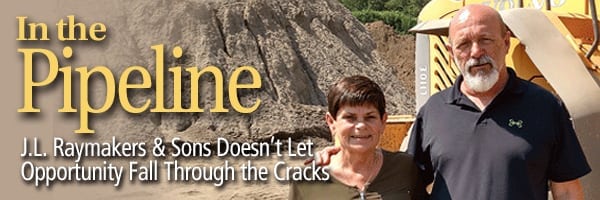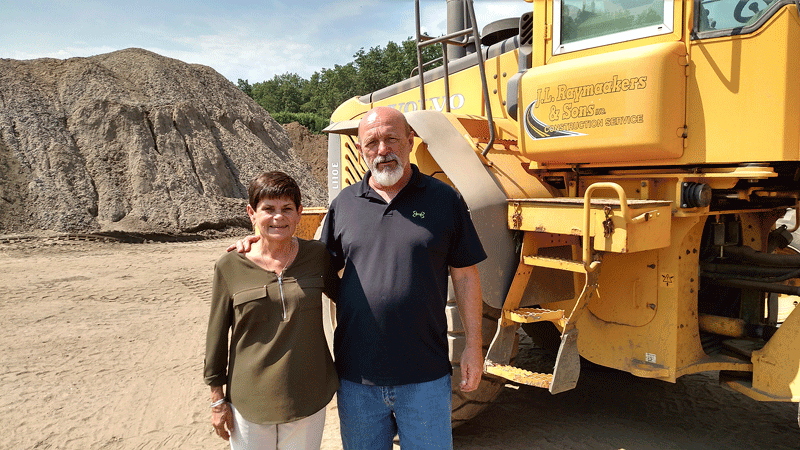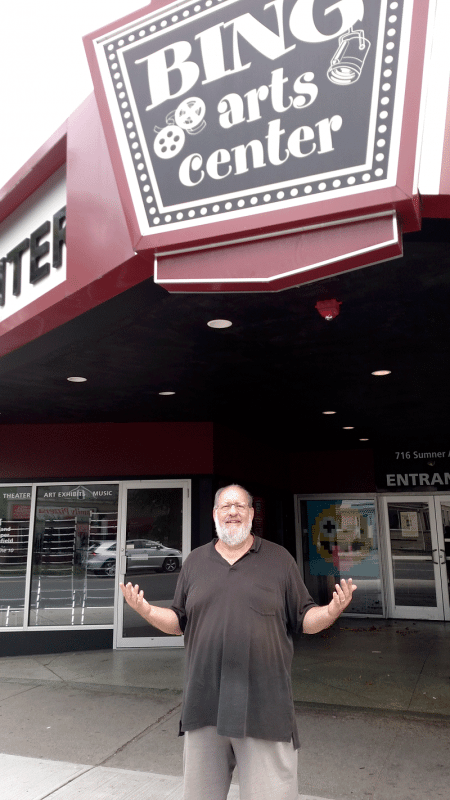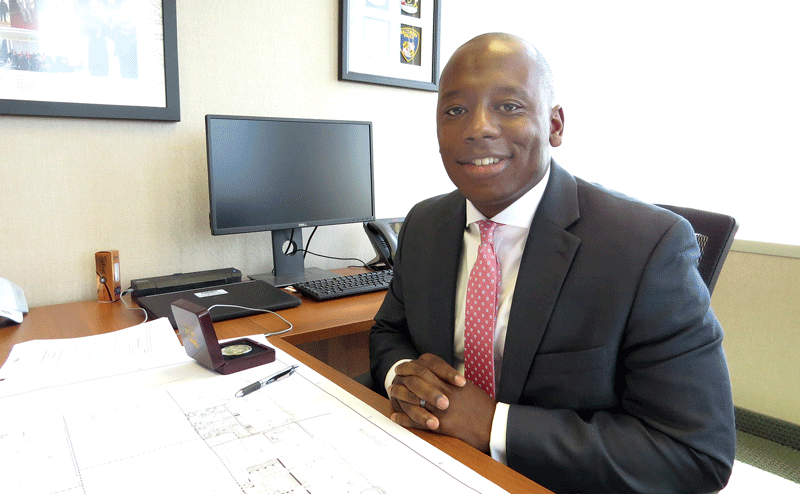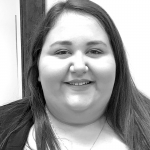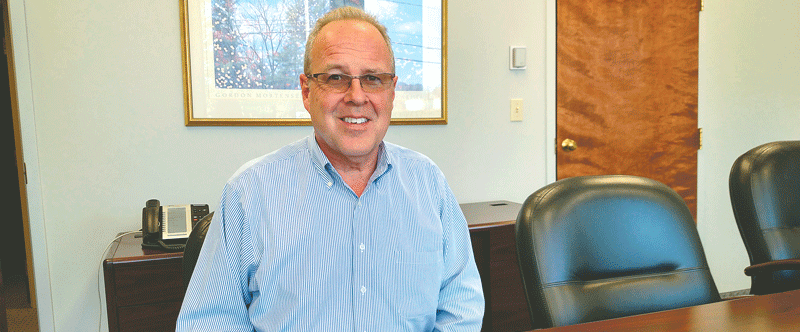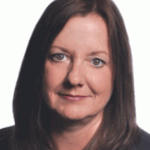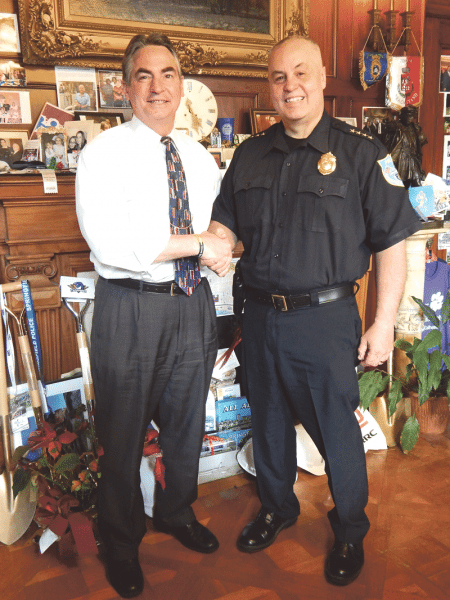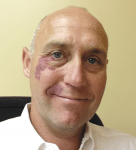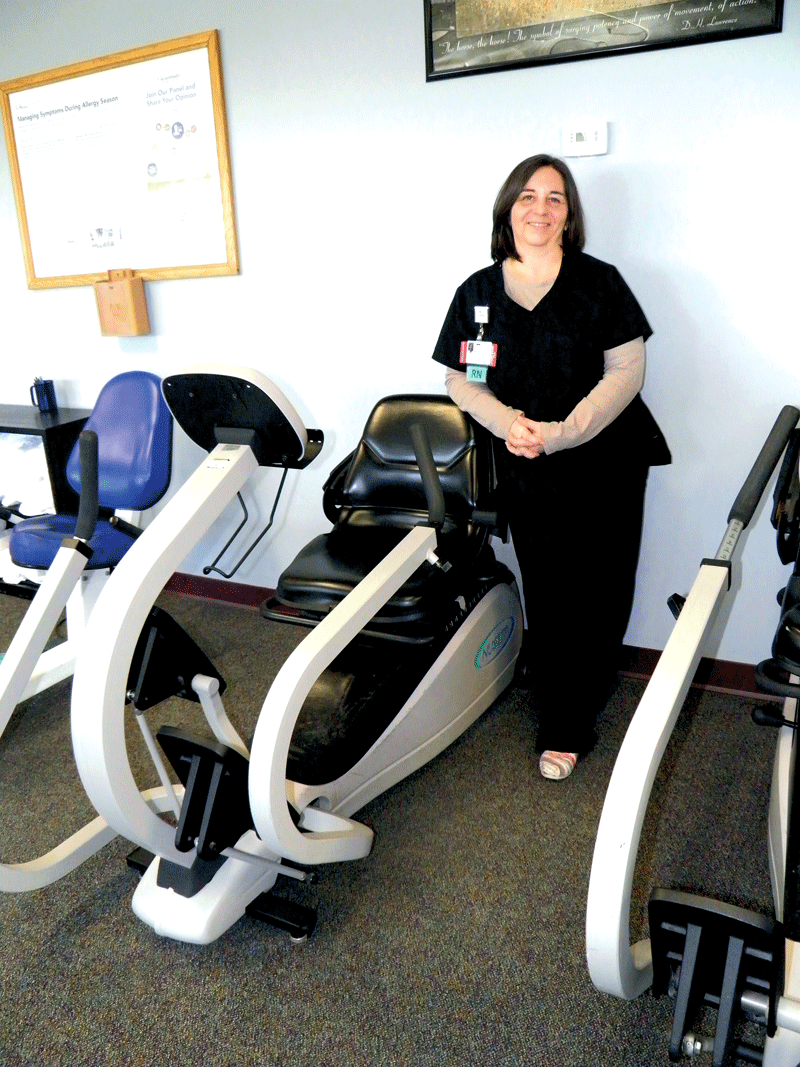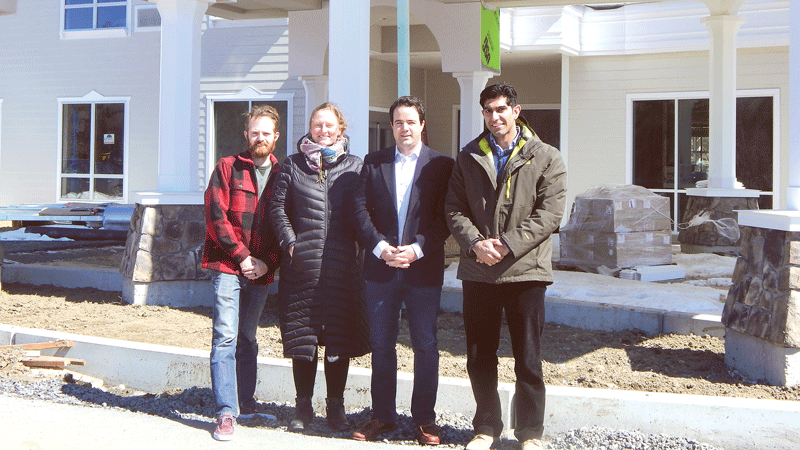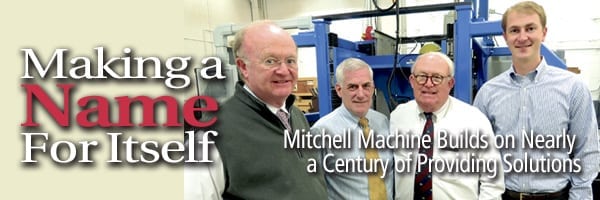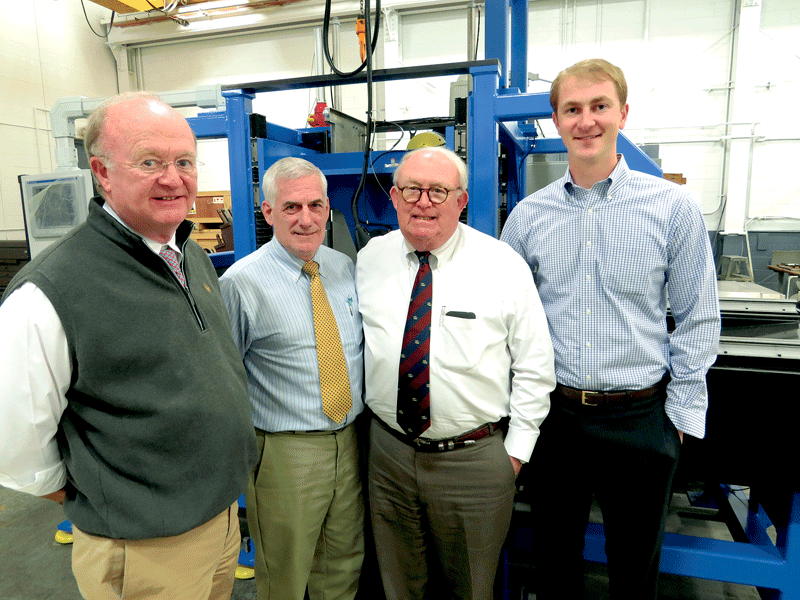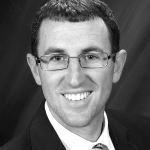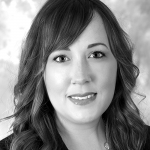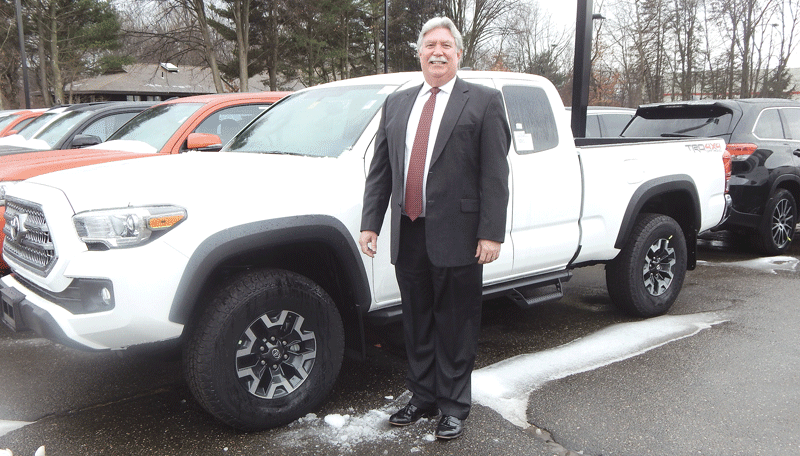The Time Is Now
Invalid Displayed Gallery
After roughly 40 years of being mostly relegated to Springfield’s past, Union Station is set to begin what will certainly be an intriguing new life. As the station sets to open next month, however, questions remain about just how viable it will be as a business and economic driver. The Union Station in Worcester provides some interesting parallels and talking points.
In many ways, the giant clock in the grand concourse at Springfield’s Union Station has served as a symbol, or metaphor, for that landmark and efforts to revitalize it.
Indeed, for the better part of four decades, time essentially stood still — for the clock (its ornate bronze hands never moved during that time) and for the station itself, which sat mostly idle and, like the timepiece, continued to deteriorate inside and out.
Today, though, the 54-inch-wide clock is functional again, having been repaired by a Medfield-based company that specializes in such work and returned to its place at the south end of the concourse. And the station will soon be functional as well; it is on schedule to be open and serving as a transportation hub next month.
And the comparisons continue. The clock required an extensive makeover, including replacement of its inner mechanism and a surface overhaul. The station? Its multi-faceted renovation has taken several years, and the price tag, when all is said and done, will be north of $80 million.

The clock in Union Station’s concourse before restoration

… and after the work was completed
However, it is at this point that the story lines separate. The clock has been repaired, and its future is no longer in doubt.
The same cannot exactly be said of the station, although there is considerable optimism about what comes next, at least among city development leaders.
Train travel is becoming a larger part of the economic-development picture in the Northeast corridor, and Union Station is well-positioned to play an important part in such efforts. Meanwhile, the station will be a hub for inner-city and perhaps intra-city bus travel as well.
But the station has long been touted as a much larger piece of the economic-development puzzle than that of a mere train and bus station. It is being projected as both a catalyst to further development — of both businesses and residential facilities — as well as home to a number of businesses in its nearly 100,000 square feet of available retail space, a key to its ability to function as something approximating a break-even business.
Chris Moskal, president of the Springfield Redevelopment Authority (SRA), told BusinessWest that three vendors have already signed on the dotted line for spaces adjacent to the concourse, and there is considerable interest in some of the available office space above it.
There is more positive news in the form of language within the host-community agreement between MGM and Springfield, said Moskal. It calls for the casino company to pay $7.5 million over the next 15 years toward the costs of operating the station and fitting out space for tenants — an option MGM chose over actually locating at the station itself.
This $500,000 annually should help the facility stem whatever losses it might incur in meeting what is currently projected to be a $750,000 annual operating budget (a number certainly subject to change), with the bulk of that going toward maintenance and security, said Moskal.
But since the restoration of Springfield’s Union Station began, comparisons to the one in Worcester have been inevitable and seemingly constant, and in many ways, this has been unfortunate for the local landmark, because these comparisons serve as a counterweight to the expressed optimism.
That’s because Worcester’s station has mostly been described locally with terms such as ‘under-performing,’ ‘disappointing,’ and ‘unsuccessful.’ And these words are, in fact, accurate, at least when it comes to the real-estate and fiscal performance sides of the equation; the station is expected to run roughly $600,000 in the red this fiscal year, slightly more than the average lately due to some needed maintenance work, and by most accounts, only half its available commercial space is under lease.
They were attracted to that area because of the train station. People can live there, take the train to a job in Wellesley or Newton or Boston; this rail service shortens the distance to those communities.”
But from a bigger-picture perspective, the station (and the vastly improved commuter rail service that has come because of it) are succeeding in their primary role, that of spurring economic development, said Stuart Loosemore, general council and director of Government Affairs and Public Policy for the Greater Worcester Chamber of Commerce.
Elaborating, he spoke of concentric circles and how development, in the form of market-rate housing, a new hotel, additional restaurants, and more have emanated out from the station, if you will, as train runs from Worcester to Boston have increased to more than 20 a day, including the popular, non-stop Heart to Hub trip, which leaves Union Station at 8 a.m.
“And it gets to Boston in an hour or less,” Loosemore explained, adding that commuting by car will likely take half again as long and bring other inconveniences and expenses, including parking. “That makes it much easier to live in Worcester and get to work or school in Boston; it’s bringing that city much closer.”
Whether similar developments will take shape in Springfield remain to be seen, especially since there isn’t a logical destination for riders, as there is in Worcester with Boston. In keeping with the theme of this story, time will tell.
Soon, though, the speculation about this city’s Union Station — again, about 40 years of it — will soon end, and its next life will begin.
In other words, the time is now.
Hour Town
Tom Erb says the assignment to restore the concourse clock at Union Station, as well as others at that facility, was in most ways typical of those taken on by his family business, Electric Time Co. Inc. And its condition when it arrived at the shop was also typical of what the company has witnessed at several old train-station projects in its vast portfolio, including a recent one in Kansas City.
In short, water had leaked onto and into the clock, manufactured by the Springfield-based Standard Electric Time Co., he explained, requiring extensive repair work to its brass and marble components.
“They were very sad-looking,” he said of the group of clocks and especially the concourse timepiece. “A few of them were missing numbers, which we had to recreate using an oxidizing compound to make them look old … they needed quite a bit of work.
“We replaced the mechanism in the main clock, which was in very bad shape,” continued Erb, whose company has worked on many projects in Western Mass., from restoration of the clock on the Springfield Armory Museum to installation of the massive timepiece now gracing the entrance to the Great River Bridge in Westfield. “We reused the existing clock hands and gave it a small control along with a receiver that latches into atomic time, so the clock will always be absolutely perfect, which is important at a train station.”
The concourse clock is one of many examples of blending old with the new at Union Station, said Kevin Kennedy, Springfield’s chief development officer, as he gave a tour of the facility.
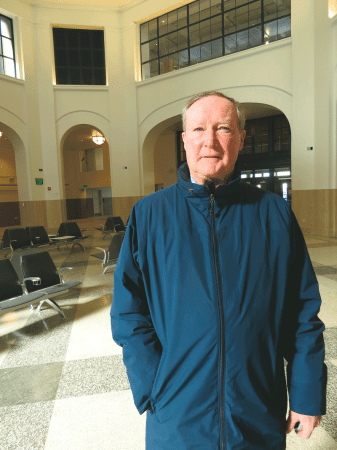
Kevin Kennedy says the renovated Union Station, and especially its grand concourse, will feature an intriguing blend of the old and the modern.
To get his points across, all Kennedy, who has been involved with redevelopment of the station for roughly 30 years now, needed to do was gesture with his arm across the concourse and just beyond. With that sweep, he pointed out the recently installed retail kiosks, the station’s original (and restored) terrazzo floor, modern exit lights juxtaposed against the original archways, original (and restored) sconces in the ceiling, and wi-fi hook-ups.
“This is an historical renovation,” he explained. “What stands out to me are two things — the neatness of that historical renovation, but also the modern codes of today that require these brightly lit exit signs. You have the 21st century coming together with 1926, and it’s pretty cool.”
The old and new will come together in dramatic and artistic fashion within the renovated tunnel linking the station with downtown Springfield, he went on, noting that there, elaborate murals depicting the history of the station and the city will be installed as part of a project being undertaken in conjunction with Springfield Museums.
While these murals will no doubt become a conversation piece and an attraction in and of themselves, those involved with the station project — especially U.S. Rep. Richard Neal — have stressed that $80 million hasn’t been spent in the name of nostalgia or to establish a museum.
Rather, it’s been spent to create a transportation hub — which the station was for decades before the decline of rail travel — as well as a business center and catalyst for further economic development.
There is little doubt that it will become at least the former. Indeed, 14 trains will soon be moving in and out of the station daily as part of expanded service in the northeast corridor, especially between Springfield and New Haven through what’s known as the Connecticut Line. Meanwhile, the Pioneer Valley Transit Authority will make the station its hub, with roughly 700 buses running in and out every day.
Intra-city bus service remains a question mark, however. Negotiations continue with Peter Pan Bus Lines, headquartered just a few hundred feet from the renovated station, about its possible presence at the facility, and there are other intra-city companies that may become tenants as well, said Moskal.
The business and economic-development sides of the equation involve more question marks, however, and the performance of Worcester’s Union Station since it was renovated in the late ’90s creates still more.
Up-to-the-minute News
As he gave BusinessWest a tour of the available commercial spaces at the station, Kennedy pointed to the large windows while listing several reasons why the assembled square footage might be an attractive landing spot. Actually, to the windows and beyond.
The windows themselves provide large amounts of natural light, which is preferred by many types of businesses, especially those in the creative fields, he said. Meanwhile, as one looks out those windows, they can see I-91, Route 291 (and signs for the Turnpike on both of them), and the point where they intersect, which translates into convenience for employees and customers alike.
Outside some windows, people can also see the 377-space parking garage, a critical component of the station project and another important amenity for a business located downtown, and from still others, people can see downtown and the many forms of progress there.
Thus, the windows reveal a lot, said Kennedy, who noted that the various spaces in the station, stretched across three floors, with one offering views of the station concourse itself, are already attracting interest, and should draw more once a few tenants settle there.
“I think people needed to see this building completed before they could really understand what we had here,” he explained. “Now that it is completed, I think people will take notice, and when we get a few tenants in here, word will start to spread.”
The concourse area itself is already filling in nicely, said Moskal, noting that agreements have been reached for three of the small retail spaces along its east side, with a convenience store, Dunkin’ Donuts, and Subway due to move in over the next few months. A fourth is still available, and there has been interest expressed in it.
Meanwhile, the convenience-store developer will also lease two of those aforementioned kiosks in the tunnel, said Moskal, adding that he isn’t sure what will be sold from them, but expects one will likely be dedicated to cell-phone accessories.
Also, a rental car company (the name was not disclosed, but Moskal said it is a major player in that business) has signed on to do business out of the station, with cars to be stored in the parking garage.
As for the office space above the concourse, Moskal said several parties have expressed interest, and he even added the adjective ‘strong’ to describe it.
“We have a number of interested parties, and one of them is very promising,” he said, referring specifically to space on the second floor, which, as noted, has windows with a view of the concourse. “That would be huge for us; this party wouldn’t take all of the second floor, but maybe 70% of it.”
And, like Kennedy, he said signing a tenant or two will likely create some needed momentum. “Once you start to spin that kind of positive news, hopefully, others will take note.”
Overall, the SRA has been “conservative,” a word Moskal used early and often, with regard to projections for tenants and resulting revenues so as not to create unreasonable expectations and disappointment if they are not met. And thus far, those goals are being met or exceeded.
“We set conservative goals — having 30% leased by the second year, and maybe 60% by the third year,” he explained. “And this is a positive for us, because we hope to have more than that under lease.”
The $7.5 million committed by MGM provides a cushion of sorts, especially for the first three years, he said, adding that the hope is that, by year four, that kind of cushion will be less necessary.
On Second Thought
But it is with the bigger-picture perspective that greater optimism likely prevails, and here, Worcester’s station should serve as an inspiration, rather than a cautionary tale, said those we spoke with.
To emphasize this point, Loosemore started with references to what was known as the Osgood-Brady Building, named for the company, which, ironically enough, manufactured railway passenger cars and streetcars there starting in 1914.
Today, it is home to more than 250 students living in more than 80 market-rate apartments carved out of the various spaces. Most of them are there, said Loosemore, specifically for the trains running out of Union Station just a few blocks away.
“They called it ‘purpose-built student housing,’ and I believe this was the first time it was done in Massachusetts,” he explained. “They’re marketing to college students, and part of what attracted them to it is students at the Worcester colleges doing internships in Boston; living next to Union Station, you can get into various areas of Worcester, because you’re right there, but you can also get to access to the train, which will get you to the Boston region and opportunities for jobs, internships, and other expanded learning opportunities.”
A new hotel is also going up in that area, and the developer has stated publicly that commuter rail is a big reason why the project went forward, and in that location. Meanwhile, across the street from the bus depot at the station, a company is building more than 350 units of market-rate housing, Loosemore continued. “They were attracted to that area because of the train station. People can live there, take the train to a job in Wellesley or Newton or Boston; this rail service shortens the distance to those communities.
Indeed, the train station and accompanying commuter rail are creating much stronger connections between New England’s two largest cities, said Loosemore, adding that many are now finding it convenient (and also far more affordable) to live in Worcester and work or go to school in Boston or one of its suburbs.
He added quickly that, while this isn’t the loftiest of goals for the city or its chamber of commerce — both would rather have people living and working in Worcester — such scenarios do bring a host of benefits.
“If I can’t have the jobs, how can I get the workers?” he asked while speaking for the chamber and noting that reliable commuter rail has become at least part of the answer to that question.
And having the workers come back to Worcester at the end of the day has certainly helped prompt growth of the city’s restaurant district, which borders Union Station.
“People come into the station, and they can go around the corner and get dinner or a drink,” he said. “People may work in Boston, but on Friday night, Saturday, and Sunday, they’re in Worcester.”
Loosemore, who has been with the chamber for roughly two years now, and has learned much of the history of Union Station and the area around it rather than experiencing it first-hand, said what’s happened there didn’t take place overnight. It came incrementally, and as commuter rail became better, faster (the Heart to Hub run, for example), and more frequent.
Tim Murray, president of the Worcester Regional Chamber of Commerce and former lieutenant governor, expanded on this thought in a recent op-ed in the Worcester Business Journal, in which he drew parallels between progress in that city and the recent success of the region’s pro football franchise.
“The ability to gain the crucial inch that determines victory often comes as the result of hard work, preparation, and never giving up,” he wrote. “These same principles apply to the progress we have made during the past 15 years to expand commuter rail service between Worcester and Boston … hard work, persistence, and preparation has allowed a team of public and private leaders to go from six round trips a day to 20.
“This progress has contributed significantly to the unprecedented private-sector investments in and around Worcester’s Union Station,” he continued. “Developers, property owners, and business owners including the City Square, Theater District, and Gateway Park projects all tout the presence of rail service as a major catalyst for their investments.”
Whether similar developments will come in Springfield remains to be seen, said Loosemore, noting that the City of Homes does not have a logical or potential-laden destination (like Boston) for commuters — yet, anyway.
In time, more routes going north-south and perhaps east-west (many officials are calling for a high-speed Springfield-to-Boston connection) may be added, and Springfield may see some of that growth in concentric circles that Worcester has.
“Having that commuter rail has certainly been a catalyst for development here,” he said in conclusion. “And it may prove to be the same in Springfield.”
Hands Down
Part of the restoration effort involving the clock in the main concourse was refinishing the words spelled out in the middle of the timepiece — ‘Eastern Standard Time.’
Erb told BusinessWest that, decades ago, it would not have been uncommon for train travelers to cross from one time zone into another in the course of their journey, and thus they might need a reminder as to just what the hour was in the City of Homes.
Such long trips, while still doable, are not a big part of the equation in this new era for Union Station. Meanwhile, cell phones automatically adjust for time zones, and that’s how most people note the time these days anyway.
But the clock still serves a very useful function, said Kennedy, adding that, for the first time in four decades, Union Station does as well. It is a transportation hub, as it was when it opened in 1926, but it is also an economic driver, perhaps one to be as successful in that role as Worcester’s.
Time will tell, but for the first time in a long time, the clock is running at Union Station, in every way, shape, and form.
George O’Brien can be reached at [email protected]



